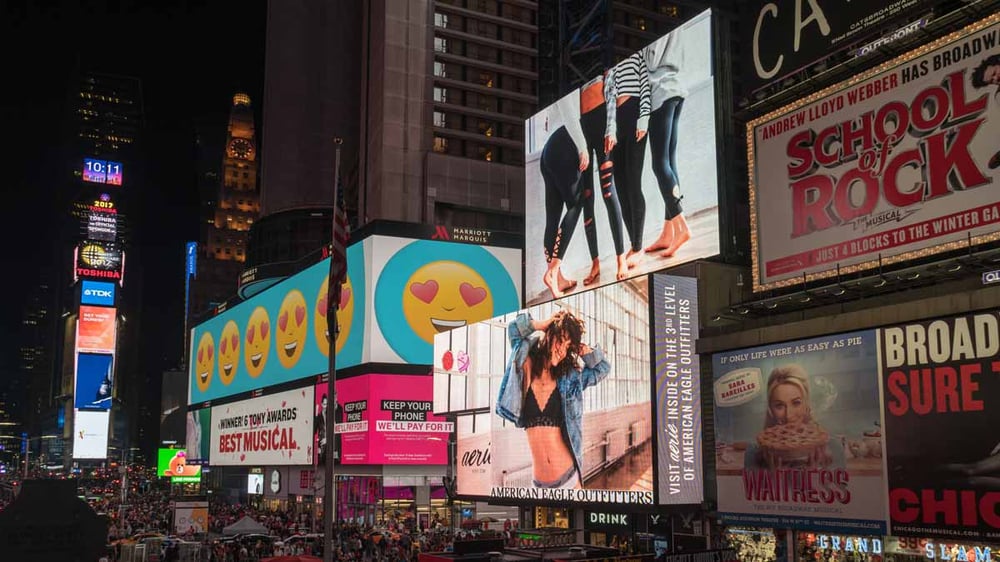Keeping Your Brand Bright when the Season Turns Gray

For many parts of the country the bright colors of autumn fade to an almost black and white landscape for the winter months. With this change of seasons also comes shorter days and the sun lower in the sky, darkening facilities, which makes it harder to see and be seen. For companies large and small this can be an issue on many levels ranging from safety to brand recognition.
First and Foremost - Safety
Obvious of course is the need to keep facilities adequately lit so people can move safely from point A to point B within and around a facility. But there are other details that are often overlooked that contribute equally to everyone’s safety:
- Is there adequate signage to help people find desired facilities and resources?
- Is that signage well located to naturally catch people’s eye?
- Is all signage properly lit to ensure visibility in different weather and at different times of day?
- Does the signage provide complete and accurate information?
- Is the information current and in compliance with applicable regulations?
Depending upon the size of a given company or facility there is often a “safety officer” charged with the attention to each and all of these details. Despite their best efforts however, you still have to ask yourself (and your staff), “how often to people get lost here?”.
And Then There’s Communication
Unfortunately, as long as human beings communicate differently (and I don’t mean just language), what is presented on a sign is likely going to be misinterpreted by at least some. In general, the challenge is how to communicate to the most information to the most people in the least amount of time in a changing environment. It takes planning, flexibility, and diligence to remain relevant and effective. A few good questions to revisit at least annually:
- Does your primary signage still present your company in a manner that is consistent with your brand standards and image?
- Are your key secondary messages (slogans, sub-titles, etc.) also presented visibly and legibly?
- Are your key branding and messaging signs still visible to the most available traffic?
- Are your informational signs located in accordance with the target audience’s traffic patterns?
- Are your informational signs legible in all relevant languages and/or ADA compliant where necessary?

Maintenance & Reliability
Like most things, signs only do their job if they are properly installed and maintained. Yet, for most of us, they are considered a “set it and forget it” asset. Also like most things, signs never fail until the worst possible time, which is generally when they are needed most or worse when the weather is bad. Some simple checks of your signage, especially complex and/or illuminated signage can help to ensure that everything remains operational:
- Check for even small cracks in any of the plastic sign surfaces. These small cracks will expand quickly in the wind and can lead to the entire panel popping out, not to mention water and/or pests getting in.
- Make sure all water outlets are clear to allow any moisture that might accumulate in a sign case to drain out before it can freeze or short out any electrical components.
- Inspect all mounts and fixtures to make sure they are sturdy and protected from the elements. Touch up or repaint chips and scratches before the freeze.
- Make sure all electrical boxes have plates secured and sealed (weatherproof components)
- Verify that all bulbs are lit and at proper luminescence levels (fluorescent bulbs degrade markedly over time)
- Looks for “stain runs”, rust or dirt stains running down a wall or fixture that “shouldn’t be there”. These can be a sign of water in places it shouldn’t be.
- Dim spots in a sign face may indicate moss inside the case, another sign of water where it doesn’t belong.
An Ounce of Prevention…
Probably one of the more overused quotations of all time, but so true. In this case, perhaps it should be more aptly rephrased, “an ounce of inspection is worth a pound of cure”. Lights and signs seem like such simple things, but when you think of it they do quite a bit to keep us informed and more importantly to keep us safe. Making them a part of our normal inspection and maintenance routines will ensure that they do so for years to come. Leave these tasks to the professionals — contact us today.

